When most people think of planting a butterfly garden, they think of butterfly bushes, zinnias, butterfly weed and other common garden flowers that attract butterflies. Herbs are also attractive to butterflies.
A successful butterfly garden provides both nectar plants, which provide food for butterflies, and host plants, which provide food for their caterpillars. Herbs fulfill both of these requirements, sometimes both at the same time!
Butterflies sip nectar from flowers. They use a long skinny proboscis so they prefer plants with tiny blossoms. Small butterflies like skippers have no problem landing on tiny flowers like herb flowers, but larger butterflies like swallowtails need larger “landing” platforms. They prefer large flowers, like echinacea, or flowers that are arranged in umbels like dills and fennels.
Butterflies are very particular about where they lay their eggs because their caterpillars have a restrictive diet, eating only certain plants. They don’t travel far so the eggs must be laid on the plants that will feed the caterpillars.
Nectar plants for butterflies
Bee Balm – a native of eastern North America and a magnet for bees, butterflies and hummingbirds, it comes in four varieties. Monarda didyma, with its familiar red flower, Monarda fistulosa, the so-called “wild bergamot” sporting lavender flowers and Monarda citriodora and Monarda pectinada, with fewer, lavender to lilac flowers, both known as “lemon mint”.
Bee balm is a perennial hardy through zone 4. A member of the mint family, it spreads but is not invasive. Depending on the variety, it grows between two and four feet tall, preferring full sun but can tolerate some shade. Bee balm is easily grown from seed. Direct sow it in your garden, pressing the seed firmly into the soil but don’t cover it. It needs light to germinate. Keep it well watered but not wet. Clumps should be divided every three years as the centers die out.
Attracts: Black Swallowtail, Eastern Tiger Swallowtail, Silver-Spotted Skipper, Spicebush Swallowtail
Catnip – Nepeta cataria native to southern Europe and southwestern Asia, it has become naturalized throughout Europe and North America. It’s a perennial that is hardy to zone 3 and grows to a height of 3 feet. It is a member of the mint family and will readily reseed itself in your garden.
Catnip seeds should be directly sown in your garden in either the fall or the spring and lightly covered with soil. Keep the soil moist but not wet. Catnip prefers full sun but like most mints, can tolerate some shade.
Attracts: Cabbage White, Dun skipper, Gray Hairstreak, Hayhurst’s Scallopwing, Silver-Spotted Skipper
Common Sage – Salvia officinalis a non-invasive member of the mint family, sage is native to the Mediterranean but has naturalized throughout much of the world. It is a perennial sub-shrub that is hardy through zone 5. The plants become woody within three to four years and will need to be replaced. Mature plants reach a height of 3 feet.
Sage can be grown from seeds or cuttings. Seeds can be started indoors 1 to 2 weeks before your last frost date. Cuttings take longer and should be started 6 to 8 weeks before your last frost date. Plant your sage in a sunny, well-drained location. Sage does not like wet feet. Wait until the second year before harvesting the leaves.
Attracts: Cabbage White, Fiery Skipper, Sachem, Silver-Spotted Skipper, Zabulon Skipper
Dogbane – Apocynum cannabinum Native to all of the northern hemisphere except Western Europe, it strongly resembles milkweed. A perennial growing 5 to 6 feet, it is hardy through zone 2 and prefers moist, well-drained soil.
Dogbane can be grown from seed or divisions. Direct sow seeds in the fall, ½ inch deep. They must go through a period of cold to germinate. If starting indoors, you will need to cold stratify them in your refrigerator for two weeks. You can also divide your plants in the fall to allow the plants to become firmly rooted in their new location before winter.
Attracts: American Lady, Banded Hairstreak, Cabbage White, Dun Skipper, Eastern Comma, Eastern Tailed blue, Eastern Tiger Swallowtail, Gray Hairstreak, Great Spangled Fritillary, Hayhurst’s Scallopwing, Horace’s Duskywing, Little Glassywing, Red-Banded Hairstreak, Red Admiral, Sachem, Silver-Spotted Skipper, Spring and Summer Azure, Wild Indigo Duskywing
Garlic Chives – Allium tuberosum A member of the onion family and native to the Himalayas and norther China, garlic chives have become naturalized throughout the world. It is a perennial that is hardy through zone 3 and grows 18” to 24” tall with white flowers in the late summer.
Direct sow the seeds in your garden in the spring or the fall, barely covering them or you can allow the flowers to go to seed and reseed themselves into your garden. Garlic chive clumps should be divided every 3 to 5 years.
Attracts: Eastern Comma, Eastern Tailed Blue, Eastern Tiger Swallowtail, Fiery Skipper, Gray Hairstreak, Great Spangled Fritillary, Pearl Crescent, Red-Banded Hairstreak, Red-Spotted Admiral, Sachem, Silver-Spotted Skipper, White M Hairstreak
Echinacea – Echinacea purpurea A North American native and a member of the sunflower family, Echinacea is a perennial that is hardy through zone 3. Mature heights vary from 2 to 4 feet. It prefers full sun but will tolerate light shade and is drought tolerant making it a welcome addition to any xeriscape.
Echinacea is easy to grow from seed and, in fact, readily self sows. Plant seed outdoors in the fall or if starting indoors, provide them with 4 to 6 weeks of cold stratification. Germination is 10 to 14 days. Mature plants can also be divided.
Attracts: American Lady, Baltimore Checkerspot, Banded Hairstreak, Black Swallowtail, Checkered White, Clouded Sulphur, Eastern Tiger Swallowtail, Great Purple Hairstreak, Great Spangled Fritillary, Horace’s Duskywing, Little Glassywing, Orange Sulphur, Painted Lady, Red-Banded Hairstreak, Red-Spotted Admiral, Sachem, Wild Indigo Duskywing
Fleabane – There are many plants that go be the name “fleabane”, most of them in the Aster family. The fleabane that North American butterflies find most attractive is the Eastern Daisy Fleabane (Erigeron annuus). It is native to North America, found most commonly in the eastern US. An annual, it grows 2 to 4 feet tall in either full sun or partial shade.
It readily reseeds itself but you can also direct sow it in your garden in the spring. Surface sow it. It needs light to germinate. Germination should occur within 4 weeks.
Attracts: American Lady, Cabbage White, Eastern Tiger Swallowtail, Pearl Crescent, Sachem
Lavender – a member of the mint family and native to southern Europe, lavender is a shrubby perennial that comes in seemingly infinite varieties. When purchasing lavender, look at the Latin name. There are three types of lavender commonly offered for sale: Lavandula angustifolia, Lavandula stoechas (the flowers look like butterflies), and Lavandula dentata (the leaves are serrated). Most people choose Lavandula angustifolia.
Lavandula angustifolia is hardy in zones 5-8. Which variety you choose depends entirely on the amount of space you have. If you have only a small amount of space or are growing your herbs in containers, choose either “Hidcote” which grows to 24” or “Munstead” which grows to 18”. If you are blessed with a large garden, I highly recommend “Provence” which is used in the perfume industry and grows to 30”. Another good choice is “Grosso” which also grows to 30”. Both Provence and Grosso will become small shrubs so make sure you give them enough space. Gaining in popular is the cultivar “Phenomenal” which is particularly cold hardy and disease resistant.
Lavender is easy to grow and seemingly indestructible. In some parts of Europe, it’s considered an invasive weed! Don’t waste your money buying seed. The germination rate is miniscule except for an AAS variety called Lady Lavender which is very tiny and not terribly fragrant. Buy a plant and put it in the sunniest, hottest, driest spot in your garden and then forget about it.
Attracts: Cabbage White, Hayhurst’s Scallopwing, Horace’s Duskywing, Silver-Spotted Skipper
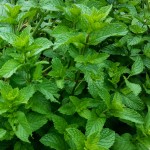 Mint – Mentha spp. A huge family of plants native to every continent except South America and Antartica. They are characterized by their square stems and aggressive growth. Most are perennial through zone 4.
Mint – Mentha spp. A huge family of plants native to every continent except South America and Antartica. They are characterized by their square stems and aggressive growth. Most are perennial through zone 4.
Mints are rarely grown from seed. You can buy plants or propagate by cuttings. Mints spread by runners. They should be confined to containers or grown in their own garden beds so that they won’t crowd out other plants.
Attracts: Cabbage White, Gray Hairstreak, Sachem, Peck’s Skipper, Silver-Spotted Skipper, Spring and Summer Azure
 Oregano – Origanum vulgare another member of the mint family, oregano is native to southern Eurasia and the Mediterranean region. It is a perennial growing 1 to 2 feet tall and hardy through zone 5. It needs full sun and dry conditions. It does well in a xeriscape.
Oregano – Origanum vulgare another member of the mint family, oregano is native to southern Eurasia and the Mediterranean region. It is a perennial growing 1 to 2 feet tall and hardy through zone 5. It needs full sun and dry conditions. It does well in a xeriscape.
You can grow oregano from seed or cuttings. Both should be started indoors 6 to 10 weeks before your last frost. Barely cover the seeds. They need some sunlight to germinate. Oregano will also reseed in your garden.
Attracts: American Snout, Black Swallowtail, Cabbage White, Eastern Tailed Blue, Eastern Tiger Swallowtail, Fiery Skipper, Gray Hairstreak, Little Glassywing, Orange Sulphur, Peck’s Skipper, Sachem, Silver-Spotted Skipper, Spring and Summer Azure, Wild Indigo Duskywing, Zabulon Skipper
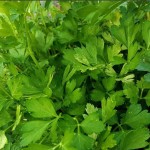
Flat Leaf Parsley
Parsley – Petroselinum crispum, a member of the carrot family, parsley comes in three varieties: flat leaf, curly leaf and root parsley. For your butterfly garden, it is best to grow the flat leaf. Parsley is a biennial in its native Mediterranean habitat. North of zone 6, it is grown as an annual because it doesn’t survive the harsh winters. The milder winters of the south are actually good for parsley. It is a cool weather plant that struggles in the summer heat.
Parsley is easy to grow from seed but you have to be patient. It takes 4 to 6 weeks to germinate. You can shorten that time by soaking the seeds in water for 24 hours before planting them. Parsley can be started indoors as long as you can provide lots of light or direct sown in your sunny garden after your last frost date. Mature plants reach 2 to 3 feet in height. Keep them well watered during the growing season, especially if you are growing parsley in containers. Don’t let the plants dry out.
Attracts: Orange Sulphur
Tansy – Tanacetum vulgare Perennial native to temperate Eurasia (Europe and Asia) and hardy through zone 4. Mature plants reach 3 to 4 feet in height. Once established, they spread via underground runners as well by reseeding themselves in your garden. Tansy prefers a sunny spot, but can tolerate some shade. It requires very little care and will grow in most garden soils. It is drought tolerant and disease resistant.
Tansy is easy to grow from seed. Start your seeds indoors in early spring. Barely cover them. They need some sunlight to germinate.
Attracts: Gray Hairstreak, Sachem
Thyme – Thymus vulgaris A member of the mint family, thyme is native to the Mediterranean area. It is a small, shrubby perennial that is hardy through zone 5. Mature plants range in size from 6 to 12 inches, depending on the variety. Thyme prefers a sunny location, but it can tolerate a little shade. It is drought tolerant and does well in a xeriscape.
Thyme is difficult to grow from seed. It is usually propagated by division or cuttings.
Attracts: Cabbage White
Valerian – Valeriana officinalis Native to Europe and parts of Asia, this perennial grows in moist meadows and woodlands. It is a member of the Aster family and hardy through zone 4. Mature plants grow 3 to 4 feet tall in full sun.
Valerian is easy to grow from seed. You can either direct sow it in the early spring or start your seeds indoors 4 weeks before your last frost date. Plant 1/4 inches deep. Germination should occur in 7 to 14 days.
Attracts: Cabbage White
Yarrow – Achillea millefolium Native to the temperate regions of the northern hemisphere, it is hardy through zone 3. It is a member of the Aster family and depending on the variety, it grows from 2 to 4 feet tall. Yarrow needs full sun and dry, well-drained soil. It is drought tolerant and does well in a xeriscape.
Yarrow is easy to grow from seed. The seeds need light to germinate, so either surface sow them or barely cover them. They will germinate when the temperature reaches at least 65°F and up to 75°F. Yarrow can also be propagated by division. It’s a good idea to divide your plants every two to three years.
Attracts: American Painter Lady, Gray Hairstreak
Host plants for caterpillars
Anise – Pimpinella anisum Native to the Eastern Mediterranean, anise is an annual that grows about 3 feet tall. It is a member of the carrot family and is hardy through zone 4. It needs full sun and well-drained soil.
Seeds should be started indoors 6 to 8 weeks before your last frost date. Anise dislikes being transplanted so you should use biodegradeable pots to start your seeds in so that the roots are not disturbed when you plant your seedlings outdoors. Plant the seeds ¼ inches deep. They should germinate within 10 to 14 days. You can move them to your garden after your last frost and when your seedlings are 4” to 5” tall.
Hosts: Anise Swallowtail
Dill –Anethum graveolens An annual hardy to zone 3 and native to southern Russia, dill is used all over the world. It is a member of the carrot family and grows to 18 – 36 inches depending on the variety. Plant in a sunny garden with well-drained soil. If you are growing it in a container, make sure your container is at least 12inches deep to accommodate the long tap root. Hot weather will cause the plants to bolt quickly.
Dill is easy to grow from seed. It readily reseeds or you can direct sow it in your garden once the soil has warmed to at least 60⁰F. Plant the seed no deeper than ¼inches where you want them to grow. Dill does not like to be transplanted. The seeds need some light to germinate. Germination should occur within 10 to 14 days. Because dill is so short-lived, you should sow seeds every two weeks during the growing season. You can also extend your harvest time by not allowing the plants to flower.
Hosts: Anise Swallowtail, Eastern Black Swallowtail
Fennel – Foeniculum vulgare Native to the shores of the Mediterranean, fennel has naturalized in many parts of the world. It’s a perennial hardy through zone 5 and grows 3 to 4 feet tall. Grow in full sun and well-drained soil.
Like dill, fennel is easy to grow from seed. You can direct sow the seed after the soil warms in the spring or allow it to reseed in your garden. Plant the seed ¼ inches deep. Germination is 1 to 2 weeks. If you are growing it in a container, make sure your container is at least 12 inches deep to accommodate the long tap root.
Hosts: Anise Swallowtail, Eastern Black Swallowtail

Hops
Hops – Humulus lupulus Hops is a perennial vine, related to hemp and marijuana, that is native to North America, Europe and western Asia. It is hardy through zone 5, dying back at the start of winter and regrowing in the spring. Mature vines reach 25 feet in length and need a trellis for support. They require full sun and well-drained soil.
Seeds can be started in the fall or early spring. Plant them ¼ inches deep and be very patient. Germination takes 1 to 3 months. Plant outdoors after your last frost.
Hosts: Question Mark, Red Admiral
Marshmallow – Althea officinalis Native to North Africa where it grows in marshes and salt marshes, marshmallow can be grown in a garden as long as received enough water. It is a perennial and hardy through zone 3. Plants grow to 3 to 4 feet in height. They want full sun and wet soil.
Marshmallow will readily self-sow in our garden, but if you are growing from seed, it can be direct sown in the late summer or in the spring. Germination can be erratic. If you want more reliable germination, start your seeds in flats and use cold stratification. Alternatively, you can divide your plants in the spring or fall.
Hosts: Checkered Skipper, Common Hairstreak, Gray Hairstreak, Painted Lady
 Mint – Mentha spp. A huge family of plants native to every continent except South America and Antartica. They are characterized by their square stems and aggressive growth. Most are perennial through zone 4.
Mint – Mentha spp. A huge family of plants native to every continent except South America and Antartica. They are characterized by their square stems and aggressive growth. Most are perennial through zone 4.
Mints are rarely grown from seed. You can buy plants or propagate by cuttings. Mints spread by runners. They should be confined to containers or grown in their own garden beds so that they won’t crowd out other plants.
Hosts: Gray Hairstreak
Nasturtiums – Tropaeolum majus Native to the Central and South America, nasturtiums have become naturalized in parts of the US. It is an annual plant with a trailing habit to 3 1/2 feet. Compact varieties grow to 12 inches. It is annual through zone 4, but perennial in zones 9 – 11. They require full sun and well-drained soil. Both the flowers and leaves are edible with a peppery taste.
Nasturtiums will readily reseed themselves in your garden or you can direct sow them after soaking them overnight. Plant the seeds ½ inchesdeep. They need darkness to germinate. Germination should occur in 7 to 10 days. Do not fertilize or you will get only leaves and no flowers.
Hosts: Cabbage White
Stinging Nettle – Urtica dioica A perennial native to Asia, Europe, North Africa and the western portion of North American. It is hardy through zone 3. Stinging nettles are commonly found in moist meadows and along the edges of streams. They reach a height of 3 to 7 feet depending on the amount of sunlight the plants receive. They can grow in full sun or partial shade.
Seeds can be direct sown or started indoors. They should be surface sown or barely covered. They need light to germinate. Cold stratification is nice but not necessary. Germination is 10 to 14 days.
Hosts: Question Mark, Red Admiral

Flat Leaf Parsley
Parsley – Petroselinum crispum, a member of the carrot family, parsley comes in three varieties: flat leaf, curly leaf and root parsley. For your butterfly garden, it is best to grow the flat leaf. Parsley is a biennial in its native Mediterranean habitat. North of zone 6, it is grown as an annual because it doesn’t survive the harsh winters. The milder winters of the south are actually good for parsley. It is a cool weather plant that struggles in the summer heat.
Parsley is easy to grow from seed but you have to be patient. It takes 4 to 6 weeks to germinate. You can shorten that time by soaking the seeds in water for 24 hours before planting them. Parsley can be started indoors as long as you can provide lots of light or direct sown in your sunny garden after your last frost date. Mature plants reach 2 to 3 feet in height. Keep them well watered during the growing season, especially if you are growing parsley in containers. Don’t let the plants dry out.
Hosts: Anise Swallowtail, Eastern Black Swallowtail
Rue – Ruta graveolens Native to the Balkan Peninsula, rue is now grown as an ornamental plant all over the world. It is a perennial that is hardy through zone 4. Plants will grow to 3 feet in height. It grows in full sun and well-drained soil. It is also drought tolerant and will do well in a xeriscape. It has been used in knot gardens because it can be pruned as a hedge.
Rue can be grown from seed but it is slow to germinate (7 to 28 days). Seeds should be surface sown indoors in late winter and transplanted outdoors in early spring. Keep your plants well watered until they have become established.
Hosts: Anise Swallowtail, Eastern Black Swallowtail, Giant Swallowtail
Violets – Viola odorata Native to Europe and Asia but now naturalized throughout North America and Australia., violets are perennials that are hardy through zone 4. Plants grow to 15 inches and will grow in full sun, but prefer semi-shade or full shade. They prefer rich soil.
Seeds can be direct sown in the fall for winter cold stratification or if starting seeds indoors, cold stratify them in your refrigerator for 4 to 6 weeks. After, plant your seeds ¼ inches deep. Germination should occur in 21 – 35 days. Plant your seedlings outdoors after all danger of frost has passed.
Hosts: Great Spangled Fritillary, Meadow Fritillary, Variegated Fritillary
Your herb garden can do double duty as a butterfly garden or you can mix herbs into a butterfly garden to provide variety for both butterflies and you.

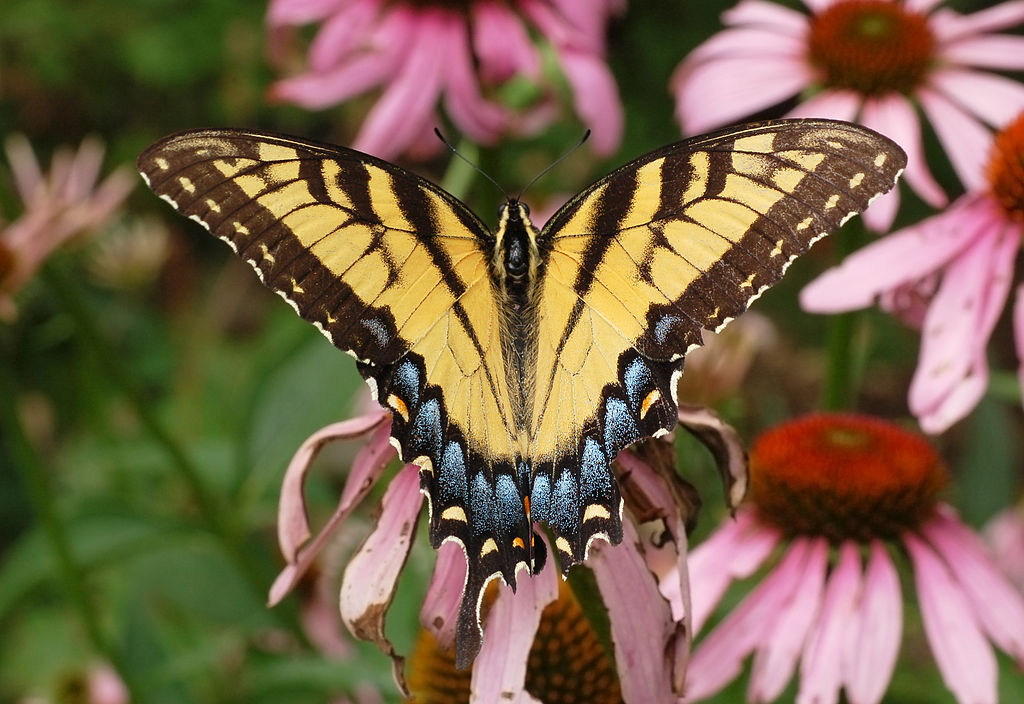
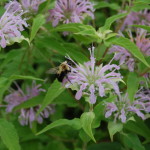
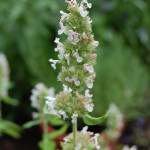
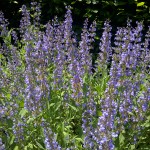
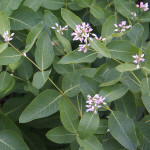
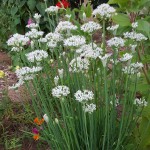
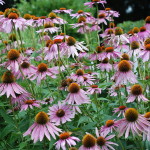
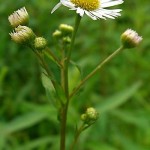
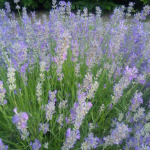
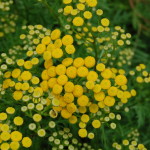
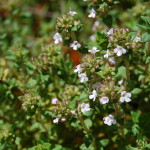
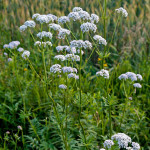
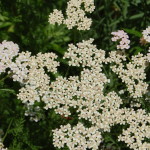
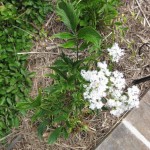
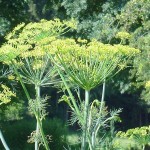
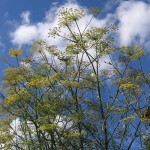

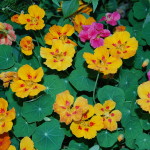
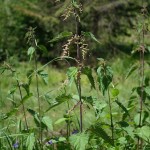
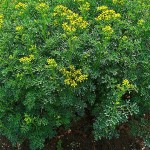
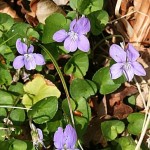
11 Comments on “Herbs for a Butterfly Garden”
Pingback: Caterpillars on my Bronze Fennel - Advice From The Herb Lady
Pingback: My Homepage
You can follow me on Twitter at @herbladyadvice.
thanks for detailed list of flowers, and herbs, will follow your advise and try to grow some of them in my small backyard.
Thanks
Does bronze fennel work for butterflies same as green?
Yes it does! In fact, bronze fennel is the only fennel that I grow because of its beautiful foliage. It is always covered with caterpillars during the summer.
Yes! I have several swallowtail eggs on my bronze fennel I planted last year. Right next to the fennel I have both curly and flat leafed parsley. I watched a Swallowtail caterpillar climb off the fennel and crawl over to the flat parsley where it started to munch away. So much for the “know it alls” who will tell you they stay on their host plant until they are ready to turn into a chrysalis!
That is very unusual behavior which is why the “experts” say that the caterpillars do not leave their host plants. Personally, I have never seen them do this in all the decades that I have been growing host plants.
Yes they do. Great for swallowtails
I’m confused about the zones. I when you say hardy through zone 3, or hardy through zone 5, are you starting in zone 10 and working north? or starting in zone 3 and working south? so herbs will grow down to zone 3, or up to zone 3 is a big difference…. I live in zone 9A. It would be helpful if you said hardy in zones 3 through 7 or give a zone parameter. Thank you.
Here is a useful reference: https://planthardiness.ars.usda.gov/ It gives the parameters for all of the US growing zones. When you see a reference like “hardy through zone 3,” it is telling you the northernmost hardiness zone. Since most of the US is in the northern growing zones 2 – 6, the coldest zone is relevant for more gardeners.